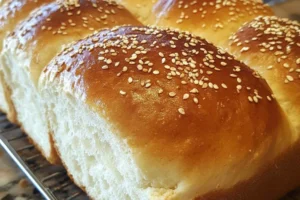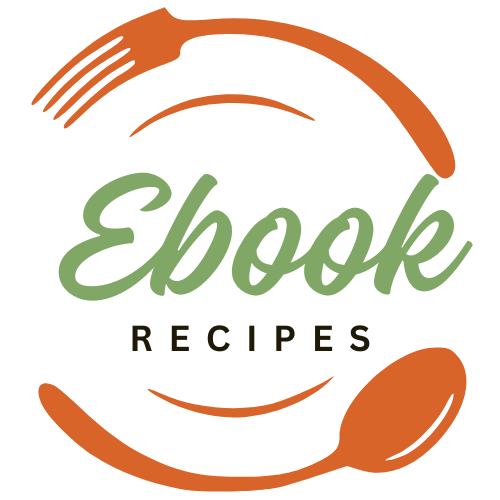Ever wondered if you can swap out regular milk for Lactaid in your bread recipes? Well, you’re not alone. Many people with lactose intolerance are curious about using Lactaid, a lactose-free milk, in their baking. It’s real milk with the lactose enzyme broken down, so it doesn’t cause those pesky digestive issues. But does it work the same in the kitchen, especially when it comes to bread? Let’s find out.
Introduction to Lactaid and Its Uses

Lactaid, a well-known brand in the lactose-free milk market, has become a staple for those dealing with lactose intolerance. It’s a lifesaver for many who love dairy but can’t handle the lactose. But what exactly is Lactaid, and how can it be used in everyday cooking?
Lactaid products are made by adding lactase, an enzyme that breaks down lactose, to real milk. This process makes it easier for people with lactose sensitivity to enjoy dairy without discomfort. From drinking it straight to using it in recipes, Lactaid offers a versatile alternative to regular milk.
Common Uses of Lactaid in Cooking
You can use Lactaid in almost any recipe that calls for milk. Here are some common ways people incorporate Lactaid into their cooking:
- Baking: Whether it’s cakes, cookies, or bread, Lactaid can be a direct substitute for regular milk.
- Cooking: Sauces, soups, and casseroles can all benefit from a lactose-free alternative.
- Beverages: Enjoy your coffee, tea, or smoothies without the worry of lactose discomfort.
Lactaid’s versatility makes it a go-to choice for those looking to enjoy dairy without the digestive issues. It’s not just a substitute; it’s a way to enjoy the full taste of dairy without compromise.
For those who love baking, using Lactaid can open up a world of possibilities. It acts much like regular milk, making it an excellent choice for anyone wanting to create lactose-free versions of their favorite dishes. If you’re looking to explore more about lactose-free milk options, lactose-free milk is a versatile product that fits seamlessly into your culinary adventures.
Understanding Lactaid: What Is It?
Lactaid is a product line designed to help those with lactose intolerance enjoy dairy without discomfort. It’s essentially real milk but without the lactose, making it a fantastic option for many who struggle with digesting regular dairy products.
Nutritional Benefits of Lactaid
Lactaid milk retains the nutritional profile of regular milk, offering essential nutrients like calcium and vitamin D. Here’s a quick comparison:
| Nutrient | Regular Milk | Lactaid Milk |
|---|---|---|
| Calcium | 300 mg | 300 mg |
| Vitamin D | 120 IU | 120 IU |
| Protein | 8 g | 8 g |
This means you don’t have to miss out on important nutrients if you switch to Lactaid.
Common Uses of Lactaid in Cooking
Lactaid is versatile in the kitchen. Here are a few ways you can use it:
- Baking: Perfect for cakes, muffins, and bread.
- Cooking: Use it in soups, sauces, and casseroles.
- Beverages: Ideal for smoothies, coffee, and tea.
Switching to Lactaid doesn’t mean compromising on taste or nutrition. It’s about finding what works best for your body and lifestyle.
For those who experience discomfort with lactose, these easy-to-swallow caplets containing lactase enzymes can be a lifesaver, breaking down lactose to prevent sensitivity issues.
The Science of Baking with Lactaid
How Lactaid Affects Dough Formation
Baking with Lactaid isn’t just about swapping regular milk for a lactose-free alternative. It’s about understanding how this change impacts your dough. Lactaid, being lactose-free, contains the enzyme lactase, which breaks down lactose into simpler sugars. This can subtly alter the way your dough ferments. Yeast thrives on sugars, so with Lactaid, you might notice a slightly quicker rise. This doesn’t drastically change your bread, but it’s something to keep in mind if you’re looking for that perfect texture.
Comparing Lactaid to Regular Milk in Baking
When you put Lactaid side by side with regular milk in baking, you might wonder if there’s a big difference. The truth is, they’re more alike than different. Both provide moisture and richness to your bread. The main difference is in the lactose content. Regular milk has it, Lactaid doesn’t. This means if you’re lactose intolerant, Lactaid is your friend. Here’s a quick comparison:
| Feature | Regular Milk | Lactaid |
|---|---|---|
| Lactose Content | Yes | No |
| Fermentation | Standard | Slightly faster |
| Texture Impact | None | Minimal |
Baking with Lactaid ensures you enjoy your favorite recipes without the lactose-induced discomfort. It’s a win-win for those who love bread but can’t handle lactose.
In short, using Lactaid in your bread recipes is pretty straightforward. Just swap it for regular milk and bake as usual. You get all the benefits of milk without the lactose. Perfect for those sensitive stomachs.

Step-by-Step Guide to Using Lactaid in Bread Recipes
Selecting the Right Type of Lactaid
When you’re thinking about using Lactaid in your bread recipes, the type you choose matters. Lactaid offers several options like whole, reduced-fat, and fat-free versions. For bread, Lactaid Reduced Fat 2% is often a good choice because it balances richness and texture without being too heavy. If you’re aiming for a lighter loaf, the fat-free option could be your go-to, but remember that it might alter the bread’s softness.
Adjusting Bread Recipes for Lactaid
Switching regular milk for Lactaid in bread recipes is pretty straightforward, but there are a few tweaks to consider:
- Measure accurately: Use the same amount of Lactaid as you would regular milk. This ensures the dough’s consistency remains just right.
- Mind the temperature: When heating Lactaid with ingredients like butter and sugar, keep it between 120 to 130 degrees Fahrenheit. This helps the yeast activate properly without killing it.
- Mixing and kneading: After combining your wet and dry ingredients, knead the dough until it becomes elastic. This usually takes about 6 to 8 minutes.
Using Lactaid in bread is as simple as swapping it in place of regular milk, but these small adjustments can make a big difference in the outcome.
By following these steps, you can achieve a loaf that’s both delicious and suitable for those with lactose sensitivity. If you’re curious about how these changes might affect other recipes, like a bread pudding, consider experimenting with Lactaid there too. You’ll find that it can be a versatile substitute in many dishes.
Tips and Tricks for Successful Baking with Lactaid
Baking with Lactaid can be a breeze if you know a few simple tricks. Here are some tips to ensure your Lactaid-based bread turns out perfectly every time.
- Room Temperature Ingredients: Always use room temperature Lactaid and eggs for your recipes. This helps the ingredients blend more smoothly and can improve the texture of your bread. Proper preparation is essential for baking cookies with Lactaid, and the same goes for bread.
- Use Fresh Ingredients: Fresh baking powder and yeast are crucial for good rise. Stale ingredients can lead to dense, flat bread.
- Don’t Overmix: When combining your wet and dry ingredients, mix just until combined. Overmixing can result in a tough texture.
- Monitor Baking Time: Keep an eye on your bread as it bakes. Ovens can vary, so check a few minutes before the recipe suggests.
- Cool Completely: Allow your bread to cool completely on a wire rack before slicing. This helps the bread set and makes slicing easier.
Baking with Lactaid doesn’t have to be complicated. With these simple tips, you can enjoy delicious, lactose-free bread without any fuss.
Remember, the key to successful baking is patience and practice. So, take your time, follow these tips, and enjoy the process of creating something delicious and lactose-free!
Conclusion: Is Lactaid a Good Choice for Bread Recipes?

When it comes to using Lactaid in bread recipes, the verdict is quite positive. Lactaid makes an excellent substitute for regular milk, especially for those who are lactose intolerant. It offers the same creamy texture and moisture to the dough, ensuring your bread remains soft and flavorful.
- Nutritional Benefits: Lactaid provides the same nutrients as regular milk, such as calcium and vitamin D, without the lactose, making it a healthier choice for those sensitive to lactose.
- Baking Performance: It behaves similarly to regular milk in recipes, so you don’t need to make any significant adjustments. The yeast still gets the sugars it needs to rise, and the dough forms just as well.
- Flavor and Texture: The taste and texture of bread made with Lactaid are virtually indistinguishable from those made with regular milk. Some bakers even report a slightly sweeter flavor due to the breakdown of lactose into simpler sugars.
If you’re looking for a lactose-free option that doesn’t compromise on taste or texture, Lactaid is definitely worth trying in your bread recipes. You might find that it becomes your go-to choice for all your baking needs.
FAQs
Can I use Lactaid in any bread recipe that calls for milk?
Absolutely! Lactaid can replace regular milk in most bread recipes. Since it contains lactase to break down lactose, it behaves much like regular milk in baking.
Does the type of Lactaid matter when baking bread?
Yes, it does. Choose the type of Lactaid that matches the fat content your recipe requires, like whole or 2%. This ensures the texture and flavor of the bread remain consistent.
Will Lactaid change the taste of my bread?
Not significantly. Lactaid tastes quite similar to regular milk, so any difference in flavor is usually minimal.
Are there any adjustments needed when using Lactaid?
Generally, no major changes are necessary. However, check your dough’s consistency and adjust with a bit more flour or liquid if needed.
Is Lactaid a healthier option for baking?
If you’re lactose intolerant, Lactaid is a great option. It’s easier on the stomach and provides similar nutritional benefits as regular milk.
Baking with Lactaid is just as easy as using regular milk, making it a versatile choice for those with lactose intolerance.
Wrapping It Up: Baking Bread with Lactaid
So, there you have it. Using Lactaid in your bread recipes is not only possible but also super easy. It’s just like using regular milk, but without the lactose that can cause discomfort for some folks. Whether you’re whipping up a classic white loaf or trying your hand at something more adventurous, Lactaid can be your go-to milk substitute. It keeps the bread soft and helps with browning, just like regular milk. Plus, you won’t have to worry about any tummy troubles. So next time you’re in the kitchen, don’t hesitate to grab that Lactaid carton. Happy baking!

